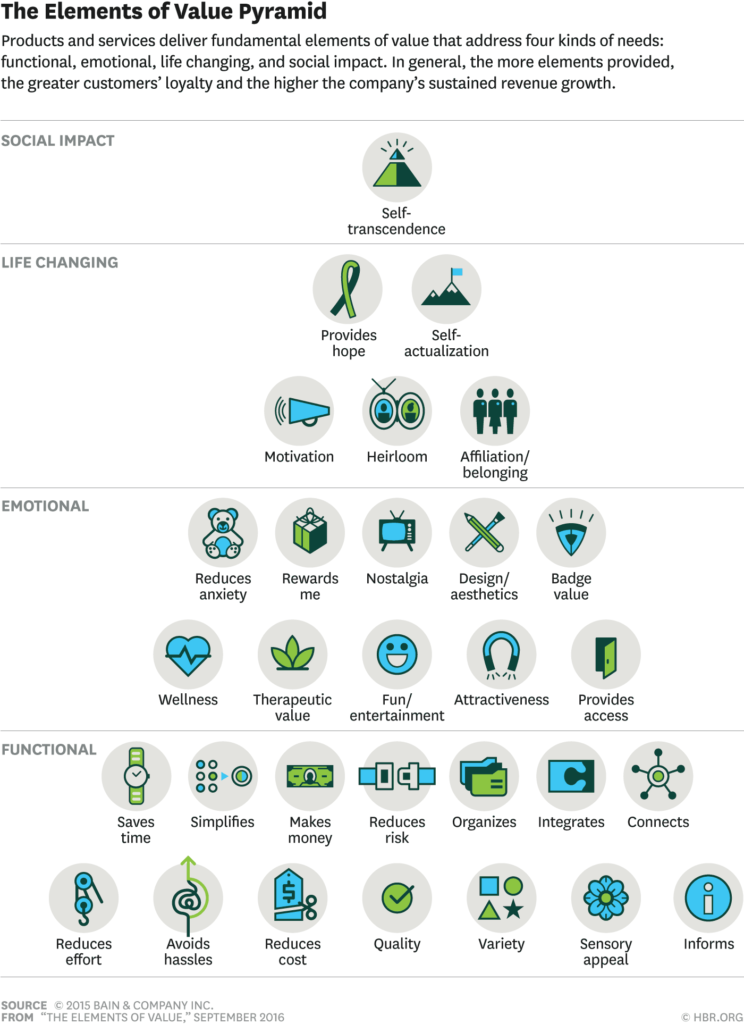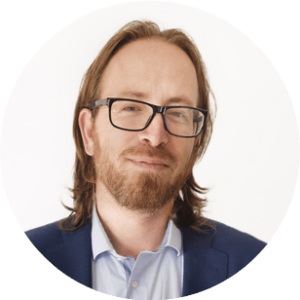It has been called on occasions Emailpocalypse, and every email marketing expert in the industry has something to say about It. But, as always, the reports of email marketing’s demise are greatly exaggerated. So how can email marketers evolve once they can’t measure open rates? And how will they gauge engagement and deliverability? Here’s what the leaders of the email marketing industry had to say.
Before we dive into what our email marketing experts had to say, I just want you to know that we hear you. After a challenging year, the last thing you want to find solutions for is the Apple Mail Privacy Protection feature.
Apple will start rolling out iOS 15 around September/November this year, and users of its Mail app will opt for the new feature.
Once they do so, Apple will mask users’ IP addresses while also caching all images. This means email marketers won’t be able to:
- Track geolocation.
- Use real-time images. And most importantly,
- Rely on accurate open rate data.
That last bit will become a pain in most operations because email marketers have followed open rates closely (some would even say religiously) for years. Without a doubt, those who attempted to learn what both ISPs and subscribers think about their emails through open rates, subject lines, and different sender names will have to step up their game, acquiring new skill sets and even toolsets.
Where do we go from here?
This shift requires us to pause for a moment and reflect upon other ways to measure success, and as always, there’s strength in numbers and experience(s).
In this post, you’ll find an elite team of email marketing experts. Ones who saw many shifts in email marketing and survived to tell the tale. Today, they’re here to help you:
- Understand the implications of Apple’s new policy.
- Figure out creative ways to measure engagement and deliverability.
- Realize that email is far from dead and continues to thrive.
Read on to learn more.
What do experts from email marketing platforms think?
The @Ongage Marketing Team – “It’s time to become the email marketer you always wanted to be.”

The apocalypse can manifest itself in many ways. Losing the ability to measure open rates in emails accurately is not one of them.
While it’s not a world-ending event, it’s nothing to scoff at. There’s a good reason why we look at open rates, even if some would say it’s a vanity metric. They do offer a glimpse into our subscribers’ behavior and how our email deliverability is fairing with various ISPs. Further, they help us with:
- Sending Time Optimization.
- Automations.
- Engagement-based segmentation.
All will be impacted by the Mail Privacy Protection.
But, while measuring open rates (if done correctly) captures the awareness stage of our funnel, it tells us little about intent.
Luckily for us, we have time to prepare. Here’s how:
First, start shifting your focus to other metrics
There are two main reasons email marketers eye open rates:
- As a means to measure performance and success. And,
- If their emails are landing in the spam folder or the inbox.
For now, let’s focus on the first reason, which is why many call open rates a vanity metric. While opens do signal an intent from the contact, showcasing some form of a healthy operation, they don’t necessarily translate into brand growth-related KPIs.
That’s why Apple forcing us to let go of open rates can be a blessing in disguise. To measure your brand’s health, you should shift the focus to other metrics that are much more crucial for your success, like clicks, conversions, revenue, and list growth.
In addition, these metrics also signal a much higher intent from the subscriber to interact with your brand. This means your automations, segmentations, and optimizations should also lean on them.
The downside is the amount of data. While you can’t argue with its quality, the quantity may be an issue, being somewhat limited depending on sending habits and list size.
Which brings us to our following points.
Second, understand that marketing and engagement need to go beyond email
Email offers personalized interaction with your audience at scale with the highest ROI. But it doesn’t mean it needs to do all this heavy lifting by itself.
Your audience is everywhere, not just in their inbox. You should be there too. Leveraging other forms of digital marketing like SMS and Push (coupled with point-of-sale interactions from any real-world interactions) can help you get more eyes on your brand from different perspectives.
Once you combine these with insights from your website interactions via your CRM, it’s growth through data time! You’ll be able to automate, segment, and optimize based on these various data points that together are much stronger than flimsy open rates.
Then, find ways to encourage engagement and interaction
If subscribers are opening our emails with no accurate data, you’ll need to be creative about encouraging contacts to interact with us within the email.
Here are some ways you can go about this:
- Add value. If you bring value to the table, you won’t have to worry about open rates. Remember that subscribers actively opted to receive your newsletters. That happened because they found value in your brand, and it’s up to you to deliver this value with:
- A variety of email personalization techniques that don’t rely on open data.
- Asking contacts for their thoughts and input on their experience with your brand via surveys and polling.
- Leading your subscribers to a landing page where you can measure stats better. If you want them to read your well-written content, ask them to do so on your blog page. Or,
- Any of these amazing ideas were suggested in the below illustrations via Bain.

- AMP for email. Introduced by Google a couple of years ago, AMP for email injects dynamic content blocks into the subscribers’ inbox. This allows your contacts to interact with your brand in real-time. They can fill forms, schedule meetings, browse various options, and more.
As the focus around understanding and interacting via intent becomes center stage in your marketing, be sure to A/B test them to understand how they impact the KPIs we mentioned earlier.
Finally, embrace 3rd party tools to assess deliverability
As mentioned, the use of open rates goes beyond the performance of an email brand. It’s a metric that helps email marketers understand if their emails are landing in the spam folder or the inbox.
The influx of false positives from Apple’s new policy will make it harder, maybe even impossible, to gauge deliverability based on open rates.
But open rates were never the only answer for the deliverability riddle. We always encouraged email marketers, and still do, to use a variety of email marketing tools to understand where emails are landing.
And what’s better than going directly to the source? Google Postmaster, Verizon Media Postmaster Tools, and Microsoft SNDS all tell you in different ways how they see you. In addition, you can extract crucial data from these services like IP and domain reputation, which is key to ISPs decisions when routing emails from your brand.
And if you’re not ready to let go of open rates?
Then there may be a way to tackle this. Apple’s new policy will only affect subscribers that are using Apple’s Mail app. And this can work to your advantage.
- A possible solution would be to identify these subscribers and exclude them from your analytics reports. This direction is currently being reviewed at Ongage HQ, and its viability depends on the quality of the way we identify the client app, as well if only the Mail app will get blocked or any app used on the iOS.
- In a similar fashion, you can decide to filter out contacts who use iOS. This will give you the behavior of Android contacts, which you can then extrapolate from. Of course, doing so might depend on the way your list is built, and while there shouldn’t be a difference between the two groups, now’s a great time to examine this!

Melissa, Haim, and Ayal lead the Ongage marketing team. With years of hands on email marketing know-how, they have a lot to offer both in terms of practical advice and creative solutions for sticky email marketing situations. You can ask them anything in the comments section, and If you subscribe to the Ongage newsletter and follow them around, you’ll see all the amazing places and challenges they’re exploring. So tune in, we’d love to have you.
Lauren Meyer @SocketLabs – “One step back to take two steps forward.”

Through the lens of a Deliverability and Compliance professional, I see two meaningful ways that this change limits the forensic capabilities of open data: first, it makes it harder for me to identify problematic senders hiding on my network, which can negatively impact deliverability for other customers. It also limits my ability to review open rates at the destination level (i.e., Gmail vs. Yahoo vs. Hotmail, etc) to proactively spot inbox placement issues without relying on inbox placement testing.
There are countless angles to consider with this change and not enough hours in the day, but I’d like to share a few recommendations to prepare you for what’s to come and to help you sleep better at night:
#1 Embrace consumer privacy
We’ve just passed the 2-year anniversary of GDPR, so it’s safe to say the writing has been on the wall for a while about the importance of consumer privacy and security. The fact is, giving email recipients more control over what marketers can know about them is a good thing. But hey, if you aren’t interested in getting on board with this from a moral standpoint, consider that Apple is not the only company moving in this direction. Get on board now so you’re not left behind.
#2 Remember that open rates were always flawed
Open rates have never been what a rational person would call “accurate”, which is why they are best used as a directional metric only. An email open is recorded any time the invisible pixel at the bottom of the email is loaded… including cases where anti-spam filters are checking the content of an email for safety, or when mailbox providers preload images so they appear more quickly when subscribers actually open that email. And there are plenty of cases where subscribers are opening your emails, but the open tracking pixel in your message has been clipped due to length, or blocked by a privacy tool like Hey, so you won’t be able to track their open, even though it did happen.
These are just a few examples. Add in the complexity of non-human-owned addresses being used to track competitors and make seed testing results more accurate, among a ton of other variables. It’s easy to see why we’ve been questioning the validity of open rates for quite a while. This news from Apple really just tips the scales in a more meaningful way.
#3 Consider the bigger picture
One of the most beautiful things about email is how much data is available. And for many years, deliverability and email strategists have been saying to monitor all of your metrics over time (including clicks, conversions, unsubscribes and complaints), not just your opens. There are many other metrics we can use to gauge recipient interest, including clicks, replies, conversions, unsubscribes, etc.
At SocketLabs, we even have our own email health metric called StreamScore. Opens are just one of the 10’s of data points we use to determine a sender’s likelihood of hitting the inbox. In fact, we’ve tested our scoring with and without this metric, with little difference in the accuracy of the scoring. So rest assured, you will survive this change.
#4 Prepare for more innovation
Email geeks are a resourceful bunch. You can rest assured this change will create a wave of innovation-focused around better use of the remaining email data points. I can tell you now: we’re already working on something big over at SocketLabs. Are you ready for the next generation of email? 😉
Ultimately, email is a data-rich marketing channel. And while losing one of our favorite (albeit over-relied upon) metrics may seem like a step backwards in the short-term, the richness of email data remains. This should result in a better outcome for recipient privacy and security at the end, which moves us two steps forward as an industry.
Lauren Meyer is a certified email deliverability geek @SocketLabs. She brings 15 years of experience in email with a heavy focus on deliverability, anti-abuse, and compliance. She is a vocal advocate for following industry best practices and having a proactive, data-driven approach to optimizing email performance and the larger customer experience.
Chris Adams @SparkPost – “Change is inevitable. It’s important to adapt.”

If we are learning anything from Apple’s recent Mail Privacy Protection (MPP) announcement it is that the continued move towards a privacy-first consumer experience is not going to slow down any time soon. Some of these changes will undoubtedly cause disruptions to the way we have historically done business, and Apple’s decision to wage war on email open pixels is such a change.
In the face of such a monumental shift to what has historically been a critical email metric, here are our top 4 impacts for email senders and recommendations they should make before MPP goes live this fall.
#1: Performance metrics
Because Apple has indicated that MPP will pre-fetch and load all images (even without the user opening the email), marketers will likely see close to 100% opens. This open inflation will apply to any email address opened in the iOS Mail app, including (but not limited to) Gmail, Yahoo, Outlook, and Corporate addresses. This impact on opens will have a significant impact on the email performance metrics many marketers track, and because of the open caching that Apple uses, marketers will not be able to discern real opens from false opens.
Our Recommendation: It will be imperative that you still monitor and manage the email performance metrics you have available, including monitoring your inbox placement. While we have always believed that Inbox Placement is an essential metric, it has at times taken a backseat to opens. Going forward your Inbox Placement metric will be an essential signal into your overall email performance.
#2: List segmentation and list hygiene strategies
Opens (or the lack thereof) have long been a key metric used for list segmentation and list hygiene strategies. Senders will need to work hard to not fall back into bad sending practices.
Our Recommendation: Proper list segmentation and list hygiene will still be critical for good deliverability. Senders will need to look at additional engagement metrics such as clicks and deeper audience behaviors, such as offline behaviors and SMS. We recommend you collect and save as much of your current open data as you can, and then use those to backtest and create new audience segments once the Apple change is live.
Brands and Marketers will also need to take a more holistic (and omnichannel) approach to list hygiene. It is important to remember that providers will still use engagement as a key signal for delivering your mail to the inbox or spam folder.
#3: Send Time Optimization
One of the primary metrics that Send Time Optimization (STO) uses in order to determine the best time to send an email is the open behavior of subscribers from not only your own email list but the open data of subscribers across the ecosystem. Given that almost 38% of the data used by STO will now be invalid, STO that depends upon opens will become ineffective and inaccurate.
Our Recommendation: It will be necessary to update your STO implementations to use different engagement metrics, such as clicks and other user behaviors. We also recommend that you collect any historical data you might have available and use it to backtest new models and implementations.
#4: Live Content in email
Live Content is different from personalized content in that it dynamically updates the content the user sees at the time the message is opened. Consider an email that offers a different promotional item based upon the weather at the time the email is opened, Live Content is the technology used to generate those emails. Our testing has indicated that because Apple caches the images, MPP will completely break Live Content rendering.
Our Recommendation: Since Live Content won’t work for ~40% of the recipients who open their email in the Apple Mail app, senders will need to use the customer data they have at send time to personalize their images. However, for mail clients that support AMP, such as when users open their email in the Gmail app, senders should consider adopting AMP and using send-time content as the fallback for non-AMP clients, such as the Mail app.
There is no question that Apple’s Mail Privacy Protection will usher in some significant changes to how Brands and Marketers monitor, target and personalize their email campaigns, especially if other providers follow Apple’s example. Having a well-planned, consumer-first strategy is more important now than ever.
Chris Adams is VP and a Distinguished Engineer @SparkPost. He’s an avid cyclist and family man who also happens to be a passionate technologist and email analytics expert. He has more than 12 years of hands-on experience in the email industry, helping organizations make the most of their email campaigns.
Alexandre Zickrick @Pathwire – “Senders will adapt and endure, as they always have.”

The consequences of the changes introduced by Apple Mail are not yet clear and there are a lot of different opinions within the email industry. Some people believe Apple’s new Privacy Protection feature is about to kill email marketing, while others think it really won’t change much for email marketers moving forward.
In my opinion, Apple’s new privacy settings will simply mean that email marketers will need to find new metrics to analyze their email performance. With open rates not available as a reliable metric with Apple Mail users, senders will need to look for new ways to determine how successful their email program is and to change the way they think about some of their tests or automated campaigns.
In terms of email deliverability, email marketers will need to ensure they’re incorporating additional processes to keep their list clean and engaged. Senders often look at open rates to determine whether people are interested in reading their emails and many implement policies to sunset clients that haven’t opened their emails in a while. Apple’s new Privacy Protection feature might make it harder to maintain a healthy email list through sunset policies, so other engagement metrics like click-through rates and tools like email validations become even more important.
However, Apple Mail’s market share is not huge, and opens will still be a reliable metric for other clients such as Gmail, so while some changes will be needed, it won’t be the end of the world. Email marketers are used to constantly changing their ways in the ever-evolving email landscape, so we shouldn’t panic. Senders will adapt and endure, as they always have.
Daniel Garcia Bonilla @InboxRoad – “Encouraging interaction with your emails.”

Apple just announced a major change in their Mail App that will be released later this year. According to Apple:
“Mail Privacy Protection stops senders from using invisible pixels to collect information about the user. [It prevents] senders from knowing when they open an email and masks their IP address so it can’t be linked to other online activity or used to determine their location.”
This will have a huge impact on how to manage and measure your campaigns. Any email opened from the Apple Mail app, regardless of the email service used (such as Gmail), will not be tracked anymore.
However, there are a few recommendations that email marketers can take into account to prepare for Apple’s upcoming Mail Protection Privacy.
Consider other metrics to track
As Open rates will no longer be available, marketers should be more focused on the following metrics:
- Click-through rates.
- Delivery rate.
- Unsubscribe rate.
- Spam/Complaint rate.
- Bounce rate
If your emails are actionable, click-throughs are a great statistic to measure rather than, or in addition to, opens.
Asking your subscribers to interact with your emails, whether the recipient clicks to update their preferences, enter a sweepstake, claim a discount code or simply click to confirm a subscription, will be the best solution.
Frequently sending a re-engagement campaign asking them to confirm that they wish to remain on your list.
You can send re-engagement campaigns to those subscribers who did not click in the last 1-2 months.
I would recommend that anyone who hasn’t clicked a link in the last 2 months or more should be removed from your list.
Clean up your lead quality, list hygiene, and having a deliverability specialist monitoring closely your email deliverability.
Since you may not be able to rely on opens as a sign of a deliverability problem anymore, having a deliverability specialist monitoring your deliverability will be important from now on to help you keep up a good reputation as a sender, monitor your sender score, SNDS, Postmaster tools and provide advice on how to improve, solve deliverability issues, and even avoid them proactively.
There are also inbox placement monitor tools that are good to check if your campaigns are landing in the inbox, promotions, or spam folder, which can also help to monitor if your campaigns are being delivered to the desired email folders.
Daniel Garcia Bonilla is an Email Deliverability Expert @InboxRoad. After finishing his studies as a System administrator, he decided to move to London where he started as an email specialist. For the past seven years, He have been tackling email deliverability issues and continues to help companies to solve them.
Paul Shriner @Audience Point – “The quest for better data.”

After a couple of weeks in the news, on the blogs and in the Slacks, the implications of Apple’s MPP technology is starting to coalesce into what feels like the cusp of a new normal. And if I’m reading the industry tea leaves correctly, the tracking pixel is dead.

#1 Pick a side?
Experts and industry veterans are falling into two distinct camps. Those that celebrate and those that grieve the loss of this curiously polarizing metric. But regardless of which camp you’re in, as marketers we objectively and inarguably will have less data at our disposal than before. For an industry built on the back of data, tracking, and analysis, having less data will always feel a little like a step backwards. For the bearish among us, the fear is Apple’s MPP technology will hamper our ability to make content decisions that create value for our audience. And less relevant marketing rarely leads to building a better brand, driving revenue, or increasing market share. Fair points.
#2 But look, things change
In marketing, the only thing that we can count on is change. The job of marketers is to adjust to that change and continue to produce results. There is a process to that.
- Be patient with the data you do have. We still have clicks, and that is 100% bullet-proof. As marketers in the new normal, we will have to push for more insight from every signal we get. A subscriber clicked. What does that tell us beyond knowing it happened? Is there more to the story? Does a click infer intent? What did they do after the click? How often do they click? Do they click a given time during the day? Do they convert after they click? Constraints can become opportunities to distinguish ourselves, but it will take work to get there.
- Consider qualitative signals. Has our reliance on data suppressed other – and perhaps more meaningful – channels for feedback? Probably. Almost definitely. Why? Because data is there when I need it. I don’t have to schedule a meeting with it. How I interpret data is fairly self-evident. People, on the other hand, are harder to read, but much richer in insight. And after all, aren’t we doing this for them in the first place? New normal marketers will need to build new feedback loops for subscribers to give us direct, raw, emotional, sometimes irrational musings on how we’re engaging them and how our brand makes them feel. And we will grow as a result.
- The power of the pool. Like a jigsaw puzzle, one piece doesn’t show you very much, but collectively, a clear picture emerges. Data is similar in that one data point, or a metric, or even a brand’s full analytics only give us a singular view of a subscriber. On the other hand, when subscriber signals are aggregated across many brands, products, and content, a much clearer view of that same subscriber emerges. We can see patterns of behavior we were blind to with a single, limited vantage point. In the new normal of less data, perhaps there is an opportunity for a rising tide notion, based on shared insights and a collaborative approach to understanding our audiences. Marketing can embrace privacy and transparency simultaneously. We can maintain our distinct brand promises and help others do the same. Marketing is not a zero-sum game and we’re embracing this ethos at AudiencePoint.
#3 Rise to the occasion
At some point we will all be staring at KPI metrics, with aggressive goals and targets for the quarter, and it will probably feel a bit overwhelming. But here is the thing. Your company’s aspirational goals are not going to change, and the role of marketing will remain consistent as a growth engine. If anything, Apple’s change has just increased the demand for what you do, without increasing the supply of people who can do it. At the end of the day, those who lean into the challenges, grow as a result, and embrace new ways of thinking will be the winners. Just like it has always been.
Paul Shriner is the co-founder of AudiencePoint, an email data company that builds software products for email marketers. In his role as co-founder and Chief Product Evangelist, Paul has helped some of the world’s biggest brands upgrade their email marketing programs, massively improving subscriber engagement and revenue generation through the smart use of data.
Scott Hardigree @Email Industries – “It’s a chance for even better deliverability metrics.”

With the upcoming release of iOS 15 expected later this year, marketing professionals will need to begin making adjustments in how they measure a campaign’s success, track a subscriber’s behavior, and how they determine engagement due to the expected loss of open rate and IP data for nearly half of email recipients.
It is estimated that nearly 38% of all email opens and clicks come from Apple devices using their native email app. Gmail app and other email app users will not be impacted.
Because email content will be downloaded by default, regardless if the subscriber opens the email, the open rates will likely be inflated and with the randomly assigned IP address, geo-targeting and retargeting across channels is expected to be more difficult. Aspects such as list hygiene, inbox placement, deliverability, and segmentation are expected to also be impacted.
What does this mean for you? Engagement, clicks, and conversion are of the utmost importance and you will need to be more targeted in your messaging to the relevant, engaged users, thus allowing you to improve your deliverability. Take actions now to validate your data to remove inactive recipient’s, execute A/B Testing on subject lines and the content, start tracking click/delivered rates, and instead of segmenting by open rates, consider combining conditions like the recency of sign up, purchase, on-site behavior, and email engagement. The more conditions you can use in your selection criteria, the better.
Bottom line, there is no need to panic, and we have seen similar changes in the industry in the past. By taking actions now and adjusting accordingly, ultimately, you should see better results with the quality of your marketing campaigns and deliverability.
Scott Hardigree is the Founder of Email Industries, longtime email deliverability experts, and makers of deliverability tools BlackBox and AlfredKnows.
What leading email marketing experts think?
Ryan Phelan – “Let’s all breathe in and relax.”

Relax.
No, really, relax. Remember when Google tabs came out, and the industry resembled that scene from Ghostbusters? Yeah, me too.
Let me start out by saying I am in the “meh” camp. Here’s why.
Yes, there are implications here, but the overall sense of panic is withdrawal symptoms because you know opens are going away, at least in part, on Apple devices where people use the Apple Mail app. I say it’s going to be ok because opens were already a flawed metric and should have always been seen as directional, not absolute.
What has happened over the years is that the open has taken off a mind of its own in people over-emphasizing the importance of the subject line. Just because you have a good subject line does not mean the message is going to work. There’s been so much focus on the subject line that the core message is less important in terms of strategic thought, focus, and effort.
So, IMO the diminishing value of the open rate is a good thing. It’s going to push us to focus on intent as it pertains to click and conversion. Now, I am not saying that those have never been important. They have. Yet, we still see many marketers focus on open.
Finally, marketing automation that relies on open is going to need to be adapted. So, start looking at what you have out there, and if you’re B2B, it’s time to rethink intent.
Also, most Send Time Optimization companies that rely too much on open will need to adapt. Frankly, a welcome change.
Now, there are some solves here. First, I think this may push some companies to adopt CDP’s which can achieve that broad view of the customer to determine intent. Further, you can infer opens (if you really want to) from a blend of email and web analytics. Lastly, android (for now) is still around, so in an already directional metric, I don’t think anyone would say that from an email experience, android users are vastly different.
Beyond that, the stuff we will see diminished are IP resolution and the associated real-time email capabilities that people have used. Location-based messaging will diminish, but those companies, along with the deliverability space, can and will adapt.
I’ve said this before. This is a maturity-level event, not the end of life. So, don’t panic. Use the agile strategies you have learned in the last 18 months, pivot, and move on.
Ryan Phelan brings nearly two decades of global online marketing experience to Origin Email Agency focusing on driving GTM strategies for high-growth SaaS software and Fortune 250 companies.
Chris Marriott – “Flying blind into the unknown.”

These days engagement is a key driver of inbox placement with leading ISPs. If you are constantly emailing people who don’t open your email, your delivery rates will decline.
These “silent unsubscribes” are a major drag on list performance. One of the biggest impacts of Apple’s change is that brands will no longer have open rate data on a large percentage of their database. But the ISPs will still have this data. So brands may suddenly find themselves getting penalized for email subscribers they didn’t know weren’t engaged!
You can say that clicks are a much better indicator of engagement, and you’d be right, in my opinion. But it’s also nonsense to say that it doesn’t matter whether or not you have open data (though you will be told that exact thing by many of my peers).
One, because, as I wrote, clicks are what the ISPs use to measure engagement. So while brands will still have click data, they will be “flying blind” in regards to opens. And second, because opens without clicks are still engagement. They are an indication of interest (subscriber raising her hand) that can perhaps be nurtured further to drive a click and, ultimately, a conversion.
Chris Marriott is the President & Founder of Email Connect, a consultancy that for the last 9 years has focused exclusively on guiding brands through the ESP vendor selection process. A 25-year veteran of digital marketing, including well over a decade in email marketing, Chris is a recognized expert in the martech vendor landscape and vendor evaluation process.
Kath Pay – “A change for the best.”

Don’t panic. Unless you’re a publisher who is rewarded on opens, you most likely won’t be overly affected. Yes, you’ll need to update your report templates, but to be honest, it’s for the best, as it will now encourage you to begin measuring the metrics that really matter to your business (if you weren’t already doing so).
Ensure your analytics software is set up correctly to track and attribute email and begin to add clicks, web traffic/site visits, conversions, AOV (if applicable), etc to your weekly/monthly reports, as well as the negative metrics such as bounces, unsubscribes and complaints. These metrics will measure not only the health of your campaigns but also your list.
Create before and after benchmarks, and analyze the relation the clicks have to your open rates. Click rate is now going to become your primary engagement metric to measure instead of opens or click-to-opens. You can, of course, still measure the open rate, taking into account the impact of this change. However, it’s probably best not to make decisions based upon it, as it now is even less reliable a metric than it was before.
If you used to A/B split test your subject lines using the open rate as the success metric, don’t despair. Using clicks or conversions as your success metric will deliver you a more accurate result. It will just take a bit more effort on your part to ensure you have a statistically significant result – this is especially true of those who have small lists. TIP: Always use a hypothesis, as that means you can test the hypothesis across multiple campaigns using different copies, allowing you to gain a statistically significant finding across multiple campaign uses, clicks, or conversions.
Be prepared. Be flexible and again. Don’t despair. Email is still the preferred channel of consumers and will still deliver the results. We just need to be prepared to make a few adjustments.
Kath Pay lives and breathes email marketing and is recognized as one of the industry’s leading Email Marketers. CEO of boutique consultancy, Holistic Email Marketing, she devotes her time to developing customer-centric eCommerce journeys using a holistic, multi-channel approach.
Winner of the 2021 ANA/EEC Email Marketers Thought Leader of the Year, and an industry veteran of 23 years, Kath is the author of the best-selling, award-winning book, Holistic Email.
Marketing, and is an international keynote speaker, regular blogger, expert contributor, and trainer.
Dela Quist – “Yay, Boo, OMG, or WTF? How’s everyone reacting?”

The Email industry almost universally uses Open Rates as a proxy for subscriber engagement and indicator of likely success in sales or other goal. Unsurprisingly, the announcement by Apple last week that – driven by Privacy – it will block pixel trackers in its Mail app, which will help hide (should you want that) your IP address, location which will prevent senders from seeing if and when an email is opened, caused quite a stir.
Broadly speaking the news gave 3 groups the most reason to cheer or boo. The Privacy Industry – (will be Yay!), Any Product – messaging apps for example or Service looking to eat emails lunch or provide a work round (also Yay!) and of course the Email Industry (will be OMG!/WTF?) For many Email Marketers the BIG question when it comes to Open Rates is this. Good, bad or indifferent, how do we replace them?
Critics of open rates generally do so for (in)accuracy reasons. The lack of a common standard and the use of blockers mean the accuracy of opens identified by tracking pixels is in question. I have never been bothered by that, because the error is constant. If one inbox provider or platform counts things in a particular way, it will do the same thing. All the time. So, you can still identify changes and trends with a reasonable degree of certainty.
Apart from the lack of subscriber information, the other reason I find them of little value is this. While the signal Opens rates give is strong their correlation with conversions and sales is weak. Click Rates by comparison give off a weak signal, but are strongly correlated with conversions and sales. As a result, we tend to discount Open rates as a metric and use an amalgamation of other, often, more correlated signals. Clicks, site visits, total purchases, purchase recency, social media, SMS etc.
This is how I would look at the issue. It’s a bit like a motor sport where everyone has to use the same engine or tires, advantage has to be gained elsewhere. When we ALL used open rates, folks who optimize using other signals would tend to do better than folks that solely use open rate. Now none of us can use open rates the same is still true. Those of us with experience of using other signals will do better than those who have relied solely on Open Rates.
The other big issue is Deliverability. Data quality aside, poor Open Rates are almost universally used by the industry as proof of and likely cause of deliverability problems. Furthermore, removing or reducing send frequency to subscribers based on the last open date is a go to recommendation. Yet the deliverability industry has largely been accepting of the move. Deliverability (quite rightly) is and always has been close to – arguably led, by Privacy. So, this doesn’t really surprise. What I am interested in learning is what will be chosen to replace open rates. In particular what metric will replace last open as to who to mail less or remove from the list. Whatever that metric is, the next question from me would be why didn’t we use it before?
Dela Quist is founder and CIO of Alchemy Worx estimates he has clocked up over 20,000 hours thinking about email. As an email marketer, Dela Quist is at the top of his field. Everything he does – from mentoring young marketers to sharing his expertise with seasoned professionals – his passion and love for seeing this industry grow and championing the people who make it up is evident
Jeanne Jennings – “Rethinking email strategy and KPIs.”

Apple’s new Mail Privacy Protection (MPP) initiative has sent shockwaves through the email industry. Rather than panic, now is the time to look at your existing email marketing program to gauge the impact and position yourself for this new ‘pixel-free’ world. Here are some places to start:
#1 Determine what percentage of your audience is opening mail on Apple email clients
The new Apple initiative only impacts recipients opening emails in an Apple email client, so knowing what percentage of your list has engaged in this behavior in the past will help you gauge the impact of MPP on your program. The larger the percentage, the more your program will be impacted.
For my clients, recipients who are using the native email app on iPhones are the big concern. While you can use other email clients on an iPhone (I use both the Outlook app and the Gmail app), most people stick with the default, which is the native Apple app. If you have a large audience opening on mobile, there’s a good chance that most of them will have MPP enabled come Fall.
#2 Identify how reliant your email program is on real-time content
Real-time content includes countdown timers, in-email shipment tracking, and anything else that is updated in ‘real time’ whenever an email message is opened. It appears that Apple is caching images when they are received, so these components of a message will no longer update in real time – they will be static content ‘stuck’ at the time they were cached.
The biggest pain point here for my clients will be countdown timers, which consistently boost conversions when used to add urgency to deadlines for ecommerce sales, event registrations, and other situations. Companies should create hypotheses about how they might replace the 20% to 50% boost we see from countdown timers – then start A/B split testing these ideas against existing countdown timers in order to have an alternative in place for fall when MPP is rolled out.
#3 Rethink your key performance indicator metrics
Email open rates have always been a relative, rather than an absolute, metric. As a result, there have been people rallying against using them since they first appeared on the scene around 2000. MPP may be what finally kills open rates – since any email where Apple caches images under MPP will appear as opened. While I’ve found them useful from a diagnostic standpoint, I’ve never used them as a measure of success or failure. With the advent of MPP, they will become much less useful, and possibly totally useless. If you rely heavily on open rates now is the time to move away from that.
Click-to-open rate (CTOR; unique clicks divided by unique opens) has risen in prominence in recent years, which some email marketers preferring it over traditional click-through rate (CTR: unique clicks divided by non-bounce send quantity). MPP will also make CTOR less useful or completely useless. So those who have ditched CTR for CTOR in recent years will need to move back to the CTR fold.
Jeanne Jennings is Founder and CEO at Email Optimization Shop, a boutique email marketing strategy consultancy, as well as General Manager of Only Influencers, the industry’s leading community of email.
Karen Talavera – “Why the email marketing community should see this as an opportunity vs. crisis.”

The email marketing world may be shaken about this news, but that doesn’t mean it’s time to panic. The sky is not falling. Email has survived numerous inbox-provider changes in the past (remember the freak-out over Gmail tabs?) and will adapt to this one too. View this not as a Chicken Little moment but as an opportunity to deepen your definition and understanding of subscriber engagement, KPIs, and response optimization.
Whether Apple’s decision will spread to other inbox providers is purely speculative, and worry over it is premature. After all, Apple’s announcement is preliminary (still in a developer preview phase) and a final release is months away, so no one knows what might change between now and then.
Instead, use this time to move beyond reliance on email open metrics as an easy proxy (dare I say crutch?) for subscriber and, more importantly, customer engagement. While it’s been nice to measure opens, doing so has never been a perfect science anyway.
I’ve witnessed over a decade of obsession with subject line testing to the detriment of downstream optimization trials and tests – where the real focus should be. Tests of content, creative, offers, and landing pages – all of which ultimately affect the bottom-line more than whether and how often subscribers open an email.
Let’s imagine open tracking does get taken off the table – what’s still possible and valuable?
- Click-through metrics.
- Conversion and purchase metrics, from journey/path to AOV to all your site or app KPIs.
- For e-commerce brands: customer engagement/purchase metrics, RFM analysis (which, yes, you should’ve been doing all along), and browsing behavior.
- For non-commerce business models: content engagement, creative and content testing, and journey optimization.
The email marketing community has long been proactive in the face of change, and I suspect this will be no different. While vendors and platform providers will undoubtedly lead the way, no matter how difficult this change may seem, I urge brand-side marketers everywhere to seize the day!
Opportunistically use the next few months to invest in better or expanded metrics-gathering, increase your focus on and investment in data analysis, and up-level your testing and optimization strategy (check out this free upcoming webinar on that).
This, too, shall pass. We’ll all weather the storm and hopefully come out even stronger and brighter as a result.
Karen Talavera is the founder and principal of Synchronicity Marketing, a data-driven digital marketing consultancy. As current Vice Chair of the Email Experience Council she is a recognized global expert, thought-leader, speaker, and professional educator with 20 years’ experience in email and digital marketing strategy.
Jordie Van Rijn – “There is a lot that marketers CAN do.”

The Apple announcement stirred up quite some intense reactions. We still have to see how Apple will implement their changes exactly. As this will be influencing opens as engagement and interest metric, there is a lot that marketers CAN do.
Stop sending boring or extremely long-winded email
It needs to be said. If in the future your open rates aren’t showing “this isn’t interesting at all” in your face anymore. Better be proactive. This is a serious call to arms. Keep their What’s in it for me (WIIFM) front and center. Your new mantra: “Stay interested, stay interesting. And thou shall see engagement.” Print it out and hang it on the wall next to your desk.
Become that tease marketer
People say to use First party data, quickly followed by “use the data you have” 😛 But putting customer database richness on the agenda means proactively go and adjust your campaigns to gather the most important data points of the customer profiles. A Tease Marketer is actively offering data enriching experiences. Find out which data points will move the needle and actively get a bit of that Tease Led Growth (buzzword pun on “X Led Growth” intended).
Be more creative to elicit engagement
For example asking an open question in your welcome emails, asking people to reply. Offer the opportunity for richer experiences beyond the click. The inbox experience is a branding exercise and becoming a welcome guest there takes a bit of creativity too.
Check if you have a continuous flow of new subscribers coming in
What are the list building tools and tactics that lead to high quality and engaged database at the moment? If you ran frequency adjustments based on opens before, now we’ll have to adjust frequency and cadence in other ways to optimize for long(er)-term CLV via email.
Stop sending those re-mailers, old-skool!
Although they work, I never liked the tactic. We have to think about the messaging in reminders and especially the practice of re-mailing the same message to openers / non-openers. Sending the same message twice becomes very annoying, very quickly – and a totally valid reason to unsubscribe. You can still message people on the same topic, but make sure the message is taking a different angle with each.
Email is hard to kill and email marketers are a very adaptive bunch, so things will be alright. Hopefully Gmail and other inbox providers will see the ridiculousness of opening pixel blocking in the name of Privacy and see the negative impact removing tracking will have on actual inbox experiences.
Jordie van Rijn is an email and eCRM marketing consultant that also guides selection MarketingTechnology. He thinks most Bio’s aren’t read anyway, so what follows is a bit of corporate Ipsum. Leverage agile frameworks to provide a robust synopsis for high level overviews. Iterative approaches to corporate strategy foster collaborative thinking to further the overall value proposition. Organically grow the holistic world view of disruptive innovation via workplace diversity and empowerment. If you are like, Huh? What just happened with this Bio? Are people allowed to break convention? – Then connect with him on Linkedin or on emailmonday.com 😉
Tali Hasanov – “A significant setback we must accept and grow from.”

On Monday, June 7th 2021, Apple announced updated versions of its operating systems, demonstrating that the company’s focus on privacy has leveled up. Calling privacy a “fundamental human right,” Federighi talked about the iOS 15 update for iPhones and the macOS 12 Monterey update for Mac computers. Simply put, Apple Mail will now keep senders in the dark about who opens their emails.
This innovation is no longer merely a marketing ploy or a business objective. It’s now a significant Apple endeavour to set its products apart from competitors.
But what does it actually mean for email marketers? Let’s take a closer look!
Impact on open rates
Many marketers consider the open rate a fluffy metric now. We can’t however be certain because it isn’t yet known how much of an impact Mail Privacy Protection will have on open rates as we don’t know how Apple will handle tracking pixels. Marketers need to be ready for this change and start looking at email metrics in a holistic way, if it was not done already.
Is that it?
Open rate is widely utilised for more than just simple statistics!
The inability to track open rates and location might have a negative impact on the following:
- Real-time personalization.
- Email lists cleaning.
- Email performance tracking.
- Email testing.
- Open metrics-based segmented or automated campaigns.
In short, Mail Privacy Protection might pose issues for your email program even if you don’t use open rate as a criterion for email marketing success.
Will Apple’s mail privacy protection affect other email apps?
This only affects data from recipients who use the Apple Mail app to set up their email account and enable privacy protection.
Is there a way to tell if a receiver has this functionality turned on or off?
No. These connections appear to be made by extremely generic user agents and IP addresses, according to preliminary testing. You might be able to figure out who’s using Apple Mail’s privacy feature, but it’ll simply be a guess.
The bottom line
Email marketing is an evolving industry and there’s no surprise that a powerful company like Apple wants to be a one step ahead of its competitors.
Certainly, Apple’s Mail Privacy Protection is a significant setback for marketers and customers who want a tailored experience from the companies they know and trust.
But rather than being afraid of changes in privacy rules and regulations, or seeking sneaky ways to cheat the system, invest your energy into accepting these changes.
After all, the most used word those days is “innovation”. Adjust your efforts to look at the email program holistically rather than focused on the open rates only.
Tali Hasanov is a results-driven digital marketer with a track record of growing her clients’ businesses and driving revenue. Her 15 years of varied and in-depth experience has helped to make her an industry leader. And in a rapidly evolving field, she’s been able to stay several steps ahead of the mainstream trends, a significant advantage that pays huge dividends for the businesses that she works with.
Pierre Pignault – “Preparing for a new future.”

Apple’s new policy will basically remove the ability to track opens on your recipient’s list. This will mean that marketers & email deliverability specialists will lose key metrics used when estimating the effectiveness of their efforts. I expect that other providers will also start moving toward more privacy and likely align with Apple’s new standard. We may see in the future Gmail or Yahoo remove open tracking as well or at least give very easy access to their user to privacy settings disabling click tracking.
Privacy protection will likely be increased in the future and the email deliverability & marketing world should prepare for a separation of the insights between places where your recipients will have agreed and access to their data (i.e., a landing page) and places where you get insights about your recipients without his direct on the spot agreement (i.e., an email sent).
What’s the impact on us?
Well, first of all, open rates have never really been accurate metrics. Between spam filters, forwarded emails, and specific settings blocking the tracking pixel from being used, relying solely on open rates to judge anything was already a wobbly call. The real impacts will be that:
- The importance of correlating multiple data to draw an accurate conclusion will be even more important (you will rely on clicks/answers/level of activity on the landing pages.)
- Third-party tools will become more important as they will remain a metric of the quality of your outgoing traffic.
- Seed list & pre-flight tests.
- Third-party trackers.
- Landing page tracking & visitor engagement analytics.
Pierre Pignault runs MailSoar, an email deliverability consulting agency. Their focus is to get your email traffic into the main inbox reliably. He used to be a freelancer. They now assist clients in all continents and from various industries (SAAS, marketing, E-commerce, Blogs, startups, and more).
Sella Yoffe – “Did Apple kill email marketing?”

Apple continues to lead by developing new services and products with its privacy-first approach. Apple will soon disrupt the email marketing industry.
#1 What is going to change?
During WWDC, Apple’s yearly developer event, held on June 7th 2021, Apple announced several privacy features.
In the upcoming release of IOS 15 (and the operating systems for iPad, Mac, and Apple Watch), expected in mid-September 2021, Apple will prevent email marketing platforms (ESP) from tracking email opens using the Apple Mail app.
ESPs will get 100% email opens from Apple Mail App (whether a person opened the email or not).
In addition, other metrics, like location and device type will be blocked.
Gmail Native App, for example, on iPhone will not be affected.
If you relied only on open rates to measure your email program’s success, you might have been doing it wrong. Email open rates are a valuable campaign engagement metric, but they’re inaccurate and flawed, with false positives serving as a leading source of unreliability.
Email is constantly evolving, just as email marketing didn’t die when Google introduced (2013) the dreaded Gmail Tabs. And there was a time when images didn’t download as default in email clients (MS-Outlook still doesn’t, so clients using Outlook can read your emails, but your ESP will not reflect an open).
I’m sure email, once again, will prevail and overcome the upcoming changes.
#2 Why is Apple doing this?
Why does a tiny invisible image being considered a privacy issue?
The name “tracking pixel” is causing bad publicity to the email marketing industry and doing a disservice to what this small image (1×1 pixel) is all about.
Over the years, the email industry didn’t explain what tracking pixels do and how they are different from tracking codes like Facebook’s “pixel”.
Furthermore, the email industry didn’t self-regulate and adjusted email tracking standards. Due to that, every ESP puts the tracking pixels in a different place in the email. Some put the tracking pixel at the top of the email, some at the middle, and some at the bottom.
I started my marketing career many years ago in direct mail. But, for obvious reasons, we didn’t know consumers opened our mailings and when. So, we measured the success of direct mail programs based on business metrics (purchases, revenue, etc.).
The email industry that traditionally relies heavily on email opens metrics will need to adapt to its new surroundings and change the way it operates according to the new game rules forced by Apple.
Marketers will have to put their best efforts into getting data from other sources (seldom siloed and outside the ESP) to get its single source of truth on the client’s performance. CDP (Customer Data Platforms) and CRM (Customer Relations Management) platforms can help with that.
#3 How to prepare?
- Assess your impact. Check the portion of users in your email database that uses Apple email. Mark/tag those users NOW!
- Prepare to lose open data almost entirely. Be prepared for other email apps and mailbox providers (MBPs like Yahoo, Gmail, etc.) to follow in Apple’s footsteps, so don’t rely on open rates. Instead, use the email open metric to look for trends in your email program over time.
- Analytics. Email analytics that always relied on opens/click-to-open ratios need to use clicks and other business signals outside the ESP, such as website behavior (digital body language), store activities, offline engagement (ex. calling call centers, redeeming store vouchers), etc.
- Automations. check and redefine all your customer journeys and automation that are based on email opens. You may want to exclude Apple devices and move to clicks using journeys.
- A/B Tests. ESPs will need to use click metrics to decide on the winning version for A/B tests of headlines and A/B tests of email versions.
- Real-Time-Content. Real-time content (like local weather) and countdown timers will not work as expected. Be prepared to adjust accordingly.
- Email deliverability. MBPs use engagement metrics to determine your sender’s reputation. Good engagement metrics (such as opens, clicks, add the sender to address book, reply, forward, move from promotion tab to the main tab, etc.), and bad metrics (such as delete before reading, mark as spam, high unsubscribe rate) are taking into consideration. They will penalize you if you send emails to unengaged users. It’s a bit early to know the impact on email deliverability without the marketer’s ability to segment unengaged users (based on email opens metrics).
So Apple didn’t kill email marketing it will allow it to grow to a more data-driven medium.
Happy sending.
Sella Yoffe is an Email Deliverability & Data Quality Expert with more than 25 years of experience in direct marketing and data quality.
Helping marketers to grow and improve their email marketing programs by increasing email deliverability, data quality, segmentation, content, email strategy, and more.
Jenna Tiffany – “Looking deeper into our operation and our funnel.”

The Mail Protection Policy isn’t a bogeyman. Quite honestly, it’s something that every reputable marketer should be welcoming. Good marketing is all about building relationships between marketers and consumers – and the best relationships have deep foundations of trust. If we truly respect our customers and want them to trust us, we should be happy that their mail is getting an extra level of protection.
That being said, losing a metric can make life more difficult for marketers. To prepare, we need to take a deep look at ourselves, at our industry, and what these metrics really mean.
If this sounds overly philosophical, it’s not meant to. We really do have to look deeper—specifically, deeper into the funnel. Open metrics can only tell us so much. They’re often described as ‘vanity metrics’ because they only give a skin-deep view of what’s really going on with your campaign.
Deeper metrics, like clicks, conversions, and CLTV (Customer LifeTime Value), give a much more accurate picture of how your email program is hitting the mark. If you’ve been relying on open rates, now’s the time to get out of your comfort zone and delve deeper into the funnel.
Email is a hugely adaptable channel. It’s stood the test of time thanks to its ability to flex and evolve. So far, it’s weathered every storm that the last 4 turbulent decades have thrown at it. It can definitely stand the loss of open metrics.
I hope that this change will trigger an evolution in the way we as marketers use emails – the kind of evolution that brings innovation. That’s hugely exciting for the email space as a whole.
I foresee a lot of change coming in the near future, so now is an excellent time to review your existing tracking practices. Ask yourself questions like:
- Do you collect information directly from recipients?
- Do you give your recipients a choice about tracking?
- What triggered journeys do you currently have in place, and how could a lack of open metrics affect them?
Overall, don’t be scared by a lack of open data in your dashboard. The deeper you look, the less it matters.
This is an amazing opportunity to throw away the crutch of vanity metrics and start building deeper data-based relationships with our customers. What’s more, this is just the first step in what I predict to be an ongoing journey towards much, much less digital tracking overall – so prepare now!
Jenna Tiffany, an award-winning marketer, has been recognized as one of the top 50 marketers to follow in the world. Jenna is the Founder & Strategy Director at Let’sTalk Strategy, providing strategic consultancy services across the digital marketing mix.
Jenna is a Chartered Marketer and awarded Fellow of the IDM with over ten years of marketing experience. Jenna has consulted with brands such as Shell, Hilton, and World Duty Free to name a few, on email marketing strategy, and is a published author with a new book, Marketing Strategy: Overcome Common Pitfalls and Creative Effective Marketing.
Shmuel Herschberg – “The open rate metric is flawed, let’s look elsewhere.”

The recent email marketing news about Apple’s upcoming Mail Protection Privacy needs to be taken seriously, but let’s also put things in perspective. The fact remains that while email marketing is not considered “cutting edge” by many, it still produces an amazingly high ROI. Plus, it’s really the only digital equity a brand owns, as SEO, SEM, and other paid channels are at the behest of digital marketing platforms.
That said, email is here to stay. In fact, I postulate the more and more personal communication moves away from the inbox – think WhatsApp, Messenger, etc. – the better it is for email marketers. Apple’s move should negatively affect open rates. They will take a hit in the coming months, and as such, email marketers need to look for other metrics that tell a better story.I recently wrote how the open rate metric is flawed in the first place, and this will cause our industry to focus on the golden, bottom line stat: revenue per mille. This stat looks at the overall revenue your email is making based on the send volume.
The revenue per mille is different than other traditional stats. In general, as you break down stats, you normally going from point A to point B, point B to point C, and so on. For example, the delivery rate is delivered divided by the number of sends, the open rate is opens divided by the amount delivered, etc. Well for the revenue per mille, we go from point A to point Z in one fell swoop! By emphasizing this today, email marketers will lay the proper groundwork to be on top of their game when Apple changes its policy.
Having said that, many brands are into “storytelling” marketing and send newsletters to drive people back to their site. These emails typically have no direct revenue per mille. Brand marketers in charge of these email marketing programs will have to think a little differently and more strategically. I think the best move here is to take stock of your email list now and see what percent is on iOS and make a baseline. After that, it will be important to focus on two other metrics: overall list growth plus click rates.
Lastly, I suggest tweaking active target groups from “general last engaged” to a hybrid model that places more emphasis on clicks than opens. For example, if up until now you sent your newsletter to last engaged in the past 90 days, modify this group to last opened in the past 60 days or last clicked in the past 120 days. This moves the yardstick out on things that matter more, i.e., clicks.
So, I welcome this move because it keeps us sharp and forces us to play our best game.
Shmuel Herschberg is a seasoned digital marketing executive, who lives and breathes email marketing. He is the founder of Shyn Media, a boutique agency that offers creative marketing automation, content strategy, and digital media services.
Mr. Herschberg possesses a unique blend of technological awareness coupled with strategic thinking and customer psychology. This enables him to translate customer needs into actionable, winning strategies.
Hillel Berg – “This is the right step for the industry, and we need to adapt.”

With the release of iOS15, Apple will enable users to block email tracking pixels. The impact of this change could be seismic, the likes of which we’ve never seen before in the inbox. So what?
#1 What does this mean for the Industry? I was shocked when Andrew Bonar told me that the biggest problem in email marketing today is that too much data was coming through the tracking pixel. I never thought about the pixel as an invasion of privacy before. Now that it’s out in the open, we should expect to see privacy protection offered by many inbox providers and ESPs should give marketers an option to turn the pixel off. This is the right step for the industry because people have a right to protect their privacy when opening an email.
#2 What does it mean for Email Marketers?
The open rate of a campaign will no longer have reliable data. Is your marketing team ready to re-calibrate their data metrics?
Open has long been “the” baseline metric to test subject lines, gauge customer engagement, and serve as a key indicator of list health.
My friend Dan Oshinsky recently said it best, “Open Rate is the check engine light of email metrics. It won’t tell you what’s wrong or what action to take next, but it’s a sign that you need to start digging into the data for more answers.”
So without your check engine light, how will you know the health of your email marketing program? How will you test subject lines if not for the open?
One strategy to compensate for the loss of Opens is to start teasing content to a click. Marketers need to adjust their strategies to maximize clicks.
- Invite users to read your newsletter instead of delivering it in the email.
- Tease the sale with a find out more button.
- Click to confirm a notification email.
#3 Deliverability
Apple is likely just the first domino to fall, and we’ll see privacy protection being offered by other inboxes as well.
Finally, the most important way you can prepare for these changes is to become more customer-focused. Do more to learn about your subscriber needs. Segment your audience and provide high-value targeted content in your emails. Put extra effort into good writing, and package your emails in easy-to-read templates. In other words, use email marketing best practices to delight and engage your audience.
Then reap the rewards.
Hillel Berg is an Email Marketing Expert. His self-titled company provides email marketing services to e-commerce companies to help them get the most from their email marketing efforts. He’s also the host of Inboxing, the podcast about email marketing. Contact Hillel for help with your email marketing.


















